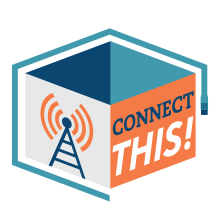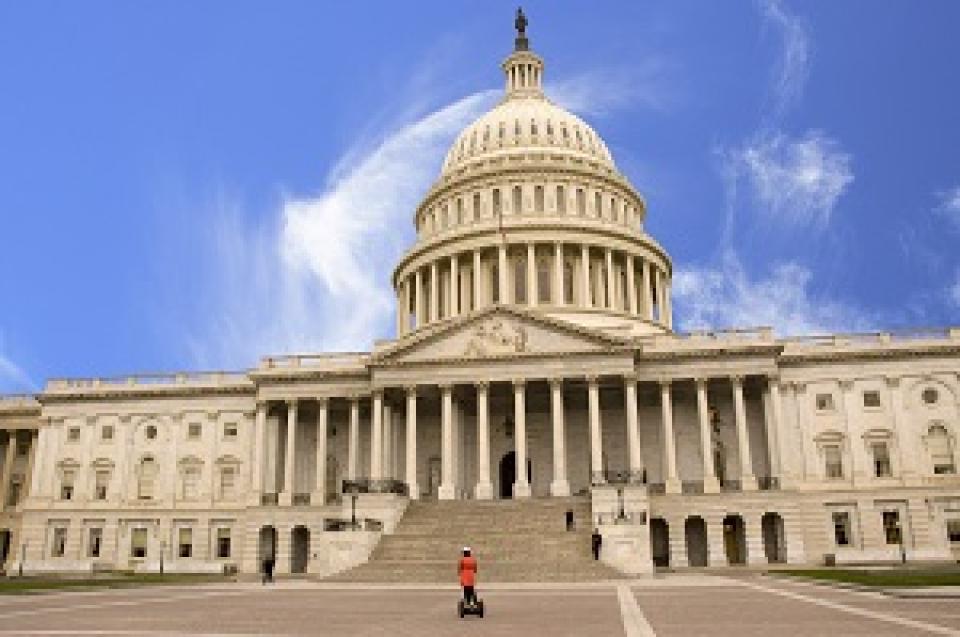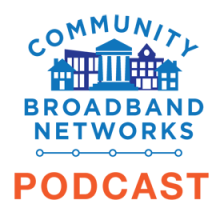
Fast, affordable Internet access for all.


Kitsap Public Utility District (KPUD) provides water, wastewater, and Internet service on Bainbridge Island and the neighboring peninsula in the Puget Sound in Washington state. It began building an open access fiber-to-the-home (FTTH) network in 2016 to address decades of poor DSL service as the only option offered by the private marketplace. Today, the Kitsap fiber network has grown to 500 route-miles and offers service to more than 1,600 premises via almost a dozen ISPs with the help of a growing team.
This week on the podcast, Christopher is joined by three members of that team: Allison Cotner (Telecom, Business, and Projects Manager), Stephanie Hall (Telecom, Business Development, and Community Relations Specialist), and Thomas Schreyer (Network Engineer). They share the building momentum in Kitsap County, driven by ever-increasing demand by residents and businesses for the publicly owned fiber network.
Christopher learns more Kitsap's innovation in using Local Utility Districts to drive expansion, which allows small groups of homes to petition KPUD to extend its network to their neighborhood. More than 50 have formed so far. He also hears about the flexible financing mechanisms the PUD and local government have created for households to foster expansion, and how happy residents are to see trucks in the area. Increased revenue has driven more investment in infrastructure to reach new households and new LUDs, which has meant more and more work for Stephanie and Thomas as they continue to build relationships with the local chamber of commerce and make sure that the network can sustain that growth far into the future.
Watch the video below to learn more about the expanding KPUD Fiber.
This show is 29 minutes long and can be played on this page or via Apple Podcasts or the tool of your choice using this feed.
Transcript below.
We want your feedback and suggestions for the show-please e-mail us or leave a comment below.
Listen to other episodes here or view all episodes in our index. See other podcasts from the Institute for Local Self-Reliance here.
Thanks to Arne Huseby for the music. The song is Warm Duck Shuffle and is licensed under a Creative Commons Attribution (3.0) license.

Join us Thursday, June 22nd at 2pm ET for the latest episode of the Connect This! Show. Co-hosts Christopher Mitchell (ILSR) and regular guest Doug Dawson (CCG Consulting) will be joined by Drew Clark (Broadband Breakfast) and Angela Bennink (Kitsap PUD) to talk about all the recent broadband news that's fit to print. Stay tuned for more!
Email us at broadband@communitynets.org with feedback and ideas for the show.
Subscribe to the show using this feed or find it on the Connect This! page, and watch on LinkedIn, on YouTube Live, on Facebook live, or below.
With an unprecedented opportunity for local communities to build their own ubiquitous high-speed Internet infrastructure, a new national organization has been formed to advocate on behalf of municipal broadband initiatives and to give local governments a seat at the table as federal and state officials craft legislation and grant programs to close the digital divide.
Today, at the Broadband Communities Summit 2022 in Houston, the group’s founding members held a press conference to announce the birth of the American Association of Public Broadband (AAPB).
“We were formed by a group of municipal officials in order to advance advocacy efforts for public broadband and to make sure they have a voice in Washington and in all 50 states,” said AAPB board member Bob Knight.

Knight went on to explain that while AAPB will be advocating for municipal solutions to local connectivity challenges, “we are model agnostic, whether you want to partner with a large ISP (Internet Service Provider), build your own network, or form a public-private partnership.”
A ‘Voice in the Conversation’
Noting that AAPB will work closely with ally organizations and industry groups, AAPB was founded primarily “because municipal networks didn’t have much of a voice in the conversation around broadband funding in the American Rescue Plan Act or the Infrastructure Investment and Jobs Act,” even as there was significant lobbying efforts on behalf of the big telecom companies.
AAPB Secretary Kimberly McKinley added that lawmakers are often assailed with stories about municipal broadband failures but that it was important for lawmakers to hear the whole story.

On this week’s episode of the Community Broadband Bits Podcast, host Christopher Mitchell is joined by Angela Bennink (Telecommunications Director for Kitsap Public Utility District) and Laura Loe (Executive Director of Share The Cities Community Education & Share The Cities Action Fund) from Washington state.
The group discusses the struggles Public Utility Districts (PUDs) have experienced over the last 20 years as a result of the state’s legislative restrictions. In 2000, the state legislature passed a law restricting PUDs from offering retail telecommunications services, despite the fact that they are a natural path toward getting fiber infrastructure to all Washingtonians.
They recount the tumultuous road to repealing the restrictions and how PUDs and other community networks are working toward providing better competition and Internet access to the region.
This show is 42 minutes long and can be played on this page or via Apple Podcasts or the tool of your choice using this feed.
Transcript below.
We want your feedback and suggestions for the show-please e-mail us or leave a comment below.
Listen to other episodes here or view all episodes in our index. See other podcasts from the Institute for Local Self-Reliance here.
Thanks to Arne Huseby for the music. The song is Warm Duck Shuffle and is licensed under a Creative Commons Attribution (3.0) license.
Snapshot
New Jersey establishes state committee to strategize deployment of community broadband networks
Louisiana Senate amends bill, opening state grant program to municipally-owned providers
Washington laws expanding municipal authority to provide retail service take effect
The State Scene
New Jersey
New Jersey Governor Phil Murphy, on July 7, enacted legislation (A.B. 850) establishing a new state committee tasked with evaluating where community broadband networks should be established across the state, by surveying areas where public networks would be most feasible to deploy.
The 19-member Broadband Access Study Commission “will consider the logistics of deploying community broadband networks and report on its findings to the Governor and the Legislature,” reports ROI NJ. “The mission includes completing a comprehensive study of the success and failures of similar networks around the nation, the costs of constructing and maintaining networks, and the costs to subscribers for monthly access.”
The Commission will also evaluate impediments to broadband access in the state, including those related to physical access, affordability, and digital literacy. After submitting recommendations to the state Governor and Legislature, the committee will dissolve within a year of its first meeting.
Louisiana
Louisiana Governor John Bel Edwards recently signed a bill (H.B. 648) allocating $180 million of incoming federal relief funds toward establishing a grant program - open to both public and private broadband providers - aimed at jumpstarting the buildout of Internet infrastructure to unserved communities across the Bayou State.
As interest in publicly owned broadband network infrastructure increases, local communities seek out new ways to fund municipal networks. Revenue bonds, interdepartmental loans, and avoided costs have been the three most common methods for funding Internet network infrastructure, but local leaders are finding creative approaches to get the job done. The Creative Funding Sources For Fiber Infrastructure fact sheet presents new approaches, pros and cons, and provides examples for further study.
New Approach to an Ongoing Challenge
Communities that need better connectivity must consider numerous factors when fiber optic network infrastructure is on the table. In addition to the type of model that’s most appropriate, decisions include vendor selection, and the extent of the network footprint. A critical element to every community network are the choice of funding mechanisms local leaders choose to see the project from idea to implementation.
Communities such as Ammon, Idaho, and Kitsap County in Washington are using fresh ideas to fund their infrastructure development. In this fact sheet we describe the way these new mechanisms work and lay out some benefits along with some potentially negative implications. It’s important that communities take a frank look at all the possible repercussions as they move forward.
This fact sheet will help your own creative funding ideas flow as you look for ways to finance your community’s high-quality Internet access project.
When the folks in Kitsap County, Washington’s Lookout Lane neighborhood banded together and used a Local Utility District (LUD) to get better connectivity, they were thinking about their own homes, not about setting a precedent. A little over a year later, other groups of neighbors are following their lead.
Sick Of Slow Connections
The Lookout Lane community formed their LUD and worked with the Kitsap Public Utility District (KPUD) to expand its open access network to their neighborhood because they were stuck with slow CenturyLink DSL. Residents didn’t feel that they were getting what they were paying for at $60 per month and 1 Megabit per second (Mbps) on average download speed. Now they have options up to 1 gigabit symmetrical via the publicly owned open access network.
Forest Ridge Estates, which is adjacent to Lookout Lane, has formed an LUD and is already connected to fiber installed by KPUD, according to Angela Bennick from the Northwest Open Access Network (NoaNet). Bennick says that there are two other neighborhoods that are considering a similar approach. KPUD is a member of NoaNet, whose open access fiber infrastructure connects that of other public utility districts across the state so people, businesses, and institutions in Washington can have high-quality connectivity.
Property owners pay for the connections themselves, but can pay off the cost upfront, over a 20-year period, or a combination of the two. Connections were from $10,000 - $14,000 in Lookout Lane, but depend on a variety of factors; property owners usually consider the investment an added value to their home. In order to establish an LUD, a neighborhood needs a majority of homeowners to sign a petition to establish the LUD.

When we first learned of the Lookout Lane fiber-optic project in the Kitsap Public Utility District in Washington, we knew we wanted to learn more. Kitsap PUD General Manager Bob Hunter and Telecommunications Superintendent Paul Avis join us for episode 237 of the Community Broadband Bits podcast.
KPUD has historically focused on water and wastewater services but they increasingly hear from residents and businesses that Internet access is a major priority. We talk about their approach and how neighborhoods are able to petition KPUD to build fiber to them. The first area to use this option had very poor Internet access from the incumbent telephone provider.
The discussion covers a lot of interesting ground, from how it is financed to where the demand is heaviest, and why public utility districts should have the option of using a retail model in some areas rather than continuing to be limited solely to wholesale-only by state law.
For related information, consider our coverage of the Northwest Open Access Network.
This show is 33 minutes long and can be played on this page or via Apple Podcasts or the tool of your choice using this feed.
Transcript below.
We want your feedback and suggestions for the show-please e-mail us or leave a comment below.
Listen to other episodes here or view all episodes in our index. See other podcasts from the Institute for Local Self-Reliance here.
Thanks to Admiral Bob for the music. The song is Turbo Tornado (c) copyright 2016 Licensed under a Creative Commons Attribution (3.0) license. Ft: Blue Wave Theory.
Residents in the Lookout Lane neighborhood of Kitsap County, Washington, tired of shoddy DSL do they joined forces to take advantage of publicly owned fiber. By the end of 2016, this group of organized neighbors anticipates connecting to the Kitsap Public Utility District (KPUD) open access fiber network.
How Did They Do It?
According to the October newsletter from the Northwest Open Access Network (NoaNet), neighbors in the Lookout Lane area had dealt with slow DSL for some time, paying $60 per month for speeds that rarely reached 1 Megabit per second (Mbps). Some of the residents have careers in the tech industry and required high-speed connections to work from home, but the national incumbent would not invest in upgrades. Lack of high-quality Internet access also caused several home sales to fall through.
Members in the neighborhood decided to petition the KPUD to form a Local Utility District (LUD), to fund their portion of the cost of a fiber expansion to their homes. KPUD would finance the cost of deployment to the edge of the neighborhood. Residents decided the investment was worth an assessment on their property rather than contending with the outdated technology offered by the incumbent.
The Lookout Lane LUD is the first in the state of Washington established for Internet infrastructure.
Forming A LUD In Washington
NoaNet describes the steps in forming a LUD on their newsletter:
How does a LUD work?
When communities decide to proceed with publicly owned infrastructure, they often aim for open access models. Open access allows more than one service provider to offer services via the same infrastructure. The desire is to increase competition, which will lower prices, improve services, and encourage innovation.
It seems straight forward, but open access can be more complex than one might expect. In addition to varying models, there are special challenges and financing considerations that communities need to consider.
In order to centralize our information on open access, we’ve created the new Open Access Networks resource page. We’ve gathered together some of our best reference material, including links to previous MuniNetworks.org stories, articles from other resources, relevant Community Broadband Bits podcast episodes, case studies, helpful illustrations, and more.
We cover:
Check it out and share the link. Bookmark it!